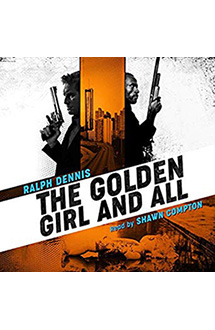
The Juan Doe Murders could have spun right off today’s headlines. Back in the ‘90s when I was living in Southern California, I was touched by the fate of Hispanics who arrived without, shall we say, government permission. Driving south just twenty miles from my home, I’d see highway signs with the black silhouettes of a running man and a woman just behind him grasping the hand of young child whose pigtails are flying as she seems lifted nearly off the ground; above them, the word “Caution.”
The signs were to notify drivers that illegal aliens were told by their “coyotes” to jump out of vehicles near the immigration checkpoint and run across the freeway to hide in the shrubs until they could make their way north. Regardless of the political question, the rendering is symbolic of just one of the dangers of illegal immigration. (Today the original sign hangs in the Smithsonian, and many of the signs have been removed as crossing areas have changed or widened.)
I regularly shot handguns at an indoor range located on a narrow road a little off the freeway. On the other side of the road, shrubs collected in thick stands. But I could still make out a small migrant camp, shirts laid out on the ground. The camp was very close to railroad tracks. More than once I read about a train annihilating an immigrant.
If I drove north to reach one of the biggest malls in the nation, I’d pass by hundreds of acres of cultivated land: Rows and rows of green stuff growing. Dozens of workers, male and female, bent to their tasks under hot sun. To get a feel for what the work was like, I harvested corn and bell peppers one year and potatoes another, for charity. But I knew at any time I could wipe a sleeve across my forehead, trudge up to the collection points, unload, and call it a day. The people scrambling for a better life couldn’t. One morning a man walked into the rows, located a certain other man, pulled a gun, killed him, and ran. I don’t remember if he was ever apprehended.
I’m not saying the “illegals” are right in coming here as they do. I just can’t erase the memory of darker-skinned nannies in white uniforms who sat on park benches watching the children belonging to the owners of nearby mansions, this park a mile from my house (my house not a mansion, however!). The contrast between how most people in the county lived and how the struggling members of Hispanic origin live, legal or illegal, just got to me.
 Calling these souls “aliens” and “illegals” distances us, although I realize we use the words as shortcuts. I chose the title The Juan Doe Murders easily after twice observing multiple simultaneous autopsies at the county morgue as part of classes in criminal investigation that I was taking. Somewhere, somehow, I heard the term “Juan Doe” in reference to a case file. During that period as well, I encountered several newspaper stories about deaths in county cities heavily populated by Hispanics, with and without Green Cards—which were not green but pink until 2010. There were case files with “John Doe” on them and “Jane Doe,” but the “Juan Doe” term offered another uncomfortable separation.
Calling these souls “aliens” and “illegals” distances us, although I realize we use the words as shortcuts. I chose the title The Juan Doe Murders easily after twice observing multiple simultaneous autopsies at the county morgue as part of classes in criminal investigation that I was taking. Somewhere, somehow, I heard the term “Juan Doe” in reference to a case file. During that period as well, I encountered several newspaper stories about deaths in county cities heavily populated by Hispanics, with and without Green Cards—which were not green but pink until 2010. There were case files with “John Doe” on them and “Jane Doe,” but the “Juan Doe” term offered another uncomfortable separation.
I wanted to change the truth and give name to some of the unidentified corpses. In fiction, we can.
On the other hand, there are some readers and writers who believe fiction is compressed truth, so I will stick with that!


